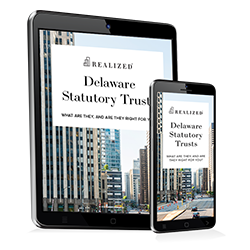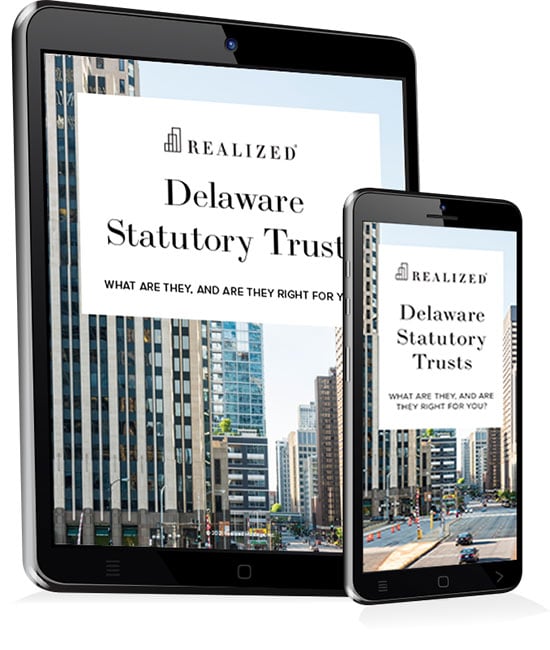
In a familiar scenario, the family business is grown and nurtured by several generations, thriving under the dedication of constant attention. If the circumstances change and that level of direct management is no longer possible, the business could falter and may fail quickly. If property assets are part of the business, one solution may be to consider changing from direct management properties to investments that do not require active involvement. For example, if the primary investor is retiring or otherwise becomes unable to continue overseeing the rental or retail property, it may be time to transition to a passive investment, such as a DST.
In this way, a DST (Delaware Statutory Trust) can aid a life-stage transition for both the investor and the future heirs. Depending on the amount of proceeds to be invested from the relinquished asset, the taxpayer may want to consider both an UPREIT (which begins as a DST to facilitate the completion of the 1031 exchange) and a traditional DST. The DST will have a smaller minimum investment (typically $100,000 versus $500,000) but a longer holding period, as DSTs are not liquid investments, while REIT shares can generally be redeemed easily. It’s essential to note that to invest in a DST, you must be an accredited investor.
For the taxpayer or the family, using a DST strategy to transition the investment portfolio from active to passive management can simplify the disengagement process and release the participants from the need to remain involved in day-to-day decision making. But to get to that point, the DST or similar investment must first be selected. One notable difference between a DST and an UPREIT is investment strategy. DSTs are invested directly into property, and the returns are dependent on income from those properties. The success of the investment may vary according to the property choices made by the DST Sponsor. The Sponsor is the entity that creates the DST and arranges for the issuance of beneficial interests in the DST to investors. The Sponsor typically chooses and manages a master tenant to lease and maintain the assets of the DST. In contrast to the DST structure, an UPREIT is typically backed by the REIT, which may have billions of assets under management and be diversified by both property type and location. That may lower the risk involved in a REIT participation but may decrease the potential gain as well. The UPREIT structure does allow for greater liquidity if needed by the investor, since REIT shares can be sold (although that transaction could trigger a taxable event.)
Choosing the DST Sponsor offers opportunities and risks for the investor. There are many choices, which is great, but too many choices can be frustrating when you are trying to narrow options. Fortunately, with DST investments it is not necessary for the investor to have expertise in the sector that they are considering, and the stake can serve as a means to enhance knowledge in a previously unexplored area of investing. As previously mentioned, the sponsor controls the property investment. This is a benefit to the investor who does not want or does not have time or expertise to actively manage property. The potential downside is that the investor surrenders any input into decisions regarding tenant approval, capital improvements, timing of sales, or other key concerns. The sponsor holds the responsibility and the authority for all operational and disposition related questions. Investors may want to consider diversification among sponsors, as well as asset classes, property types, and geography.



